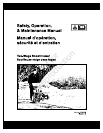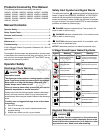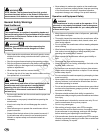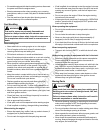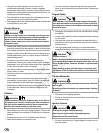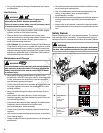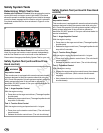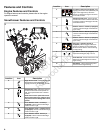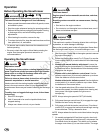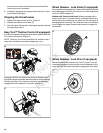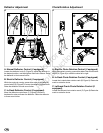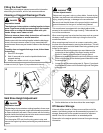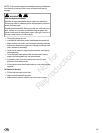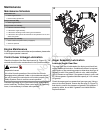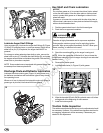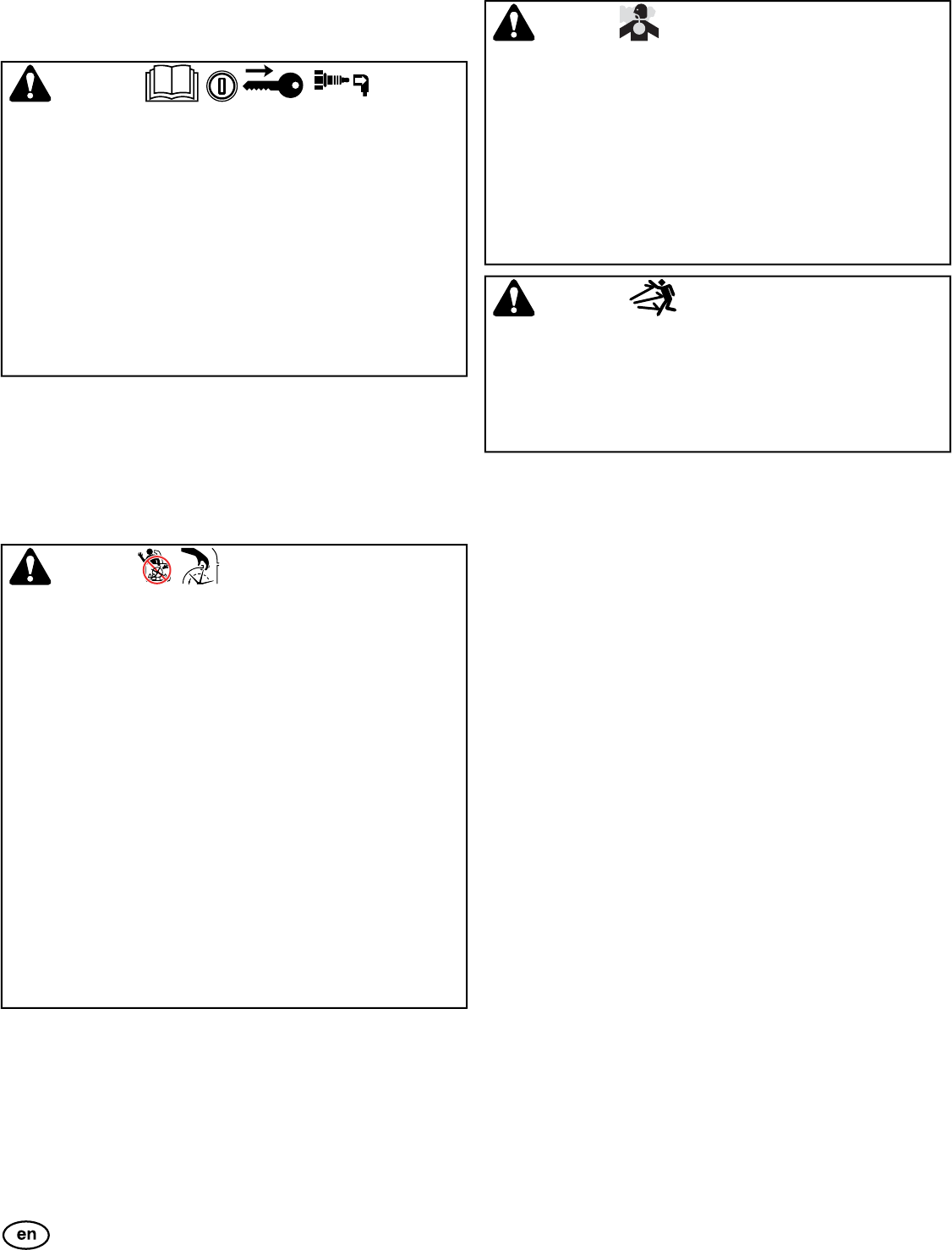
Operation
Before Operating the Snowthrower
WARNING
Read the operator's manual before operating the machine.
This machine can be dangerous if used carelessly.
• Never operate the snowthrower without all guards, covers,
and shields in place.
• Stop the engine whenever leaving the operating position.
• Remove the key before unclogging the impeller housing
or discharge chute, and before making repairs or
adjustments.
• When leaving the machine, remove the key.
• To reduce the risk of fire, keep the machine clean and free
from spilled fuel, oil, and debris.
• On electric start models, disconnect the extension cord
before operating.
• Be sure to check the engine oil level before starting the
engine. See the engine operator's manual for oil
recommendations.
Operating the Snowthrower
DANGER
Amputation hazard
The discharge chute contains a rotating impeller to throw
snow. Fingers can quickly become caught in the impeller.
Never clear or unclog the discharge chute with your
hands. Always use a clean-out tool.
Failure to observe these safety instructions will result in
traumatic amputation or severe laceration.
Hand contact with the rotating impeller inside the discharge
chute is the most common cause of injury associated with
snowthrowers. Never useyour hands to clean outthe discharge
chute.
To safely clear a clogged discharge chute, follow these
instructions:
1. Shut OFF the engine.
2. Wait 10 seconds to be sure the impeller blades have
stopped rotating.
3. Always use a clean-out tool, not your hands.
DANGER
Toxic fume hazard
Engines give off carbon monoxide, an odorless, colorless,
poison gas.
Breathing carbon monoxide can cause nausea, fainting,
or death.
• Start and run the engine outdoors.
• Do not start or run the engine in an enclosed area, even if
doors and windows are open.
WARNING
Thrown objects hazard
This machine is capable of throwing objects that could injure
bystanders, or cause damage to buildings.
Be sure the operating area is clear of bystanders. Never direct
the discharge toward anyone, or toward buildings or cars.
1. Start the engine. Please refer to the engine operator's manual
for engine information.
2. Rotate the chute rotation crank (C or D, Figure 3) or use the
chute rotation switch (E) to set the direction of the discharge
chute.
3. Models with manual defector adjustment: Loosen the
wingnut securing the chute deflector (I). Raise the deflector
to throw snow further. Set the defector to the desired position
and tighten the wingnut.
Models with in-dash deflector control lever: Use the
deflector control lever (H) to move the deflector up or down.
Raise the deflector to throw snow further.
Models with electric deflector control: Use the deflector
control switch (J) to move the deflector up or down. Raise
the deflector to throw snow further.
4. Use the speed select lever (B) to select the forward or
reverse drive speed. Use lower speeds when clearing wet,
heavy snow. Use higher speeds for light snow or
transporting.
NOTE: Always set engine speed to FAST (full throttle).
5. Fully press the auger control lever (A) to engage the auger.
Release the lever to stop the auger.
6. Fully press and hold the traction control lever / Free Hand
control (F/G) to engage the traction drive and begin moving
the snowthrower. To stop, release the lever.
NOTE: Always release the traction control lever before changing
speeds.
7. On models equipped with Free Hand controls, when both
the auger (A) and traction control levers (F) are pressed, the
Free Hand control is activated. This allows you to release
the auger control lever (A) to use other controls. The auger
9
Not for
Reproduction



